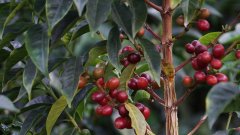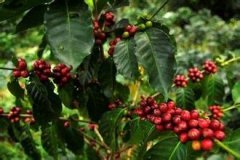When does coffee from Papua New Guinea enter the market?
The 1975 frost destroyed most of Brazil's coffee crop, but spurred coffee growth in Papua New Guinea. The Government has introduced a scheme to finance rural or collective land ownership, creating coffee plantations of about 20 hectares. This measure has indeed increased the penetration of coffee cultivation into the local economy, with annual production reaching 1 million bags by 1990.
However, it is almost inevitable that the surge in production will lead to a decline in quality. Before 1991, the quality of coffee was acceptable, most of which belonged to the open Y class. After 1991, the quality gradually declined and the European market was lost. The extra price that Y grade coffee used to have has also gradually fallen. This has to do with the country's "one price per class" policy. This policy is simply not feasible for an industry as volatile as coffee. As a result, poor quality coffee beans damaged the image of Y coffee high quality standards, resulting in a backlog situation.
The government's response was to establish new quality grades, temporarily stop producing Y grade coffee, and no longer implement the "one grade one price" policy. This allows buyers to price according to quality, which inevitably affects the income of farmers who produce inferior coffee beans. By 1993, the quality problem had basically been solved. Most of our regular customers are buying coffee from Papua New Guinea again. Y-grade coffee is now sold at a slightly lower premium price, indicating an improvement in quality.
Although coffee trees grow vigorously in some places, the coffee beans harvested vary in maturity and size due to the lack of persistence of growers. AA is rare, and you can usually buy A and AB. The main characteristics of A-grade coffee are: fullness of particles, light acidity, and endless aftertaste after drinking.

Important Notice :
前街咖啡 FrontStreet Coffee has moved to new addredd:
FrontStreet Coffee Address: 315,Donghua East Road,GuangZhou
Tel:020 38364473
- Prev

Gold Manning of Indonesia
High-quality coffee beans are refined by water treatment. The coffee beans with less impurities can be obtained by the water washing method, but if the water quality and time are not properly controlled during the fermentation process, the coffee beans will easily be infected with the sour taste of excessive fermentation. and dry beans also need to pay attention to timely re-inspection to prevent coffee beans from being contaminated by wet ground and sundries. Processed
- Next

Peruvian coffee with Latin American flavor
Boutique coffee has a strict grading system. Generally, raw beans are preserved in parchment coffee beans in the form of endocarp after processing, and the endocarp is removed before export. Go through a strict grading process to ensure the uniformity of quality. And it is very important to preserve the protection in the process of transportation, such as the control of temperature and humidity, the control of ventilation, avoiding odor adsorption and so on.
Related
- Does Rose Summer choose Blue, Green or Red? Detailed explanation of Rose Summer Coffee plots and Classification in Panamanian Jade Manor
- What is the difference between the origin, producing area, processing plant, cooperative and manor of coffee beans?
- How fine does the espresso powder fit? how to grind the espresso?
- Sca coffee roasting degree color card coffee roasting degree 8 roasting color values what do you mean?
- The practice of lattes: how to make lattes at home
- Introduction to Indonesian Fine Coffee beans-- Java Coffee producing area of Indonesian Arabica Coffee
- How much will the flavor of light and medium roasted rose summer be expressed? What baking level is rose summer suitable for?
- Introduction to the characteristics of washing, sun-drying or wet-planing coffee commonly used in Mantenin, Indonesia
- Price characteristics of Arabica Coffee Bean Starbucks introduction to Manning Coffee Bean Taste producing area Variety Manor
- What is the authentic Yega flavor? What are the flavor characteristics of the really excellent Yejasuffi coffee beans?

